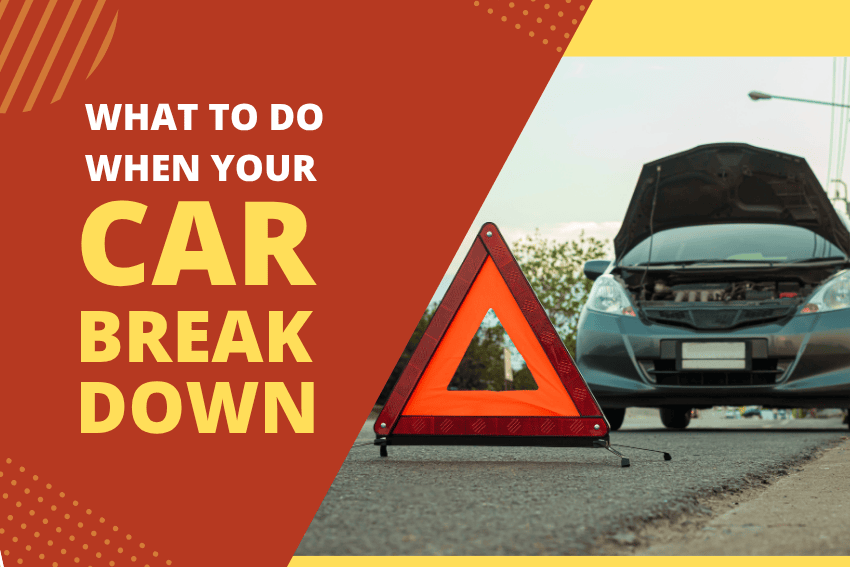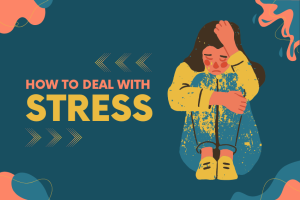Your Car breakdown might catch you by surprise — on a lonely road, during rush-hour traffic, or on holiday with the family. You’re driving down the road one afternoon, suddenly your dashboard light’s flashing like a Christmas tree, or your vehicle’s making strange noises, or smoke is coming out of your car. Stressed? You bet. But being a do-right only when your car breakdown can turn what could be calamity into something bearable.

Car breakdown owing to any sort of reason, sizzling engines, punctured tyres, dead batteries, gasoline issues, or electrical issues.
Step 1: Have a Calm Mind and See What Happens
The initial and most imperative step towards any car breakdown is having a calm mind. Panic leads to making mistakes and rash driving. Instead of that, keep yourself cool and attempt to see what’s happening.
As your vehicle starts to break down on you, you start to grind, lose acceleration, or start smoking — your initial reaction will be to slam your brakes, even when cruising down a high-speed highway. Don’t do it suddenly. Slow the vehicle down gradually and pull over onto the side of the road.
After a breakdown, switch on the hazard lights at the earliest. They flash to alert other people that your vehicle is not in working condition. The earlier they catch sight of a warning sign, the safer their driving will be to avoid accidents.
After you’ve stopped safely, look for signs of the problem. Always recall: Safety first, second diagnosis. Never in a rush to glance at the engine on a busy highway. Rather, remain seated with a seatbelt buckled and visually estimate where possible.
How to Turn on and Use Hazard Lights Properly
Hazard lights are not just blinking bulbs; they’re your lifeline to visibility in a roadside emergency. They inform approaching drivers that you’re stationary and need space. Most vehicles have a red triangle button on the dashboard. Once pressed, both turn signals flash simultaneously.
Flip them on when you feel the breakdown is imminent, short of a stop even. It warns other vehicles that you are slowing for a breakdown. Hazard lights are a wonderful help in rain or darkness in making you much more visible and less likely to be rear-ended.
Leave them on for the duration of class, your car is idling, especially if you’re idling late at night or in a high traffic zone. When you’re where roadside assistance can find you, they can turn them off.
Determining the nature of the problem: If there is a leak of fluid, over-smoker, or a burn smell issue, however, do not try to repair it. Turn off the engine, securely access, and contact a mechanic.
Step 2: Pull Over Safely and Securely
If you know that your car is not in working order, your only concern is to get it out of the way. You slow down and drive your car off the side road, car park, or wherever there is space off the road. Do not stop at S-curve or blind turn and narrow bridges — it is not safe because oncoming traffic will never have any hope of spotting you until they arrive.
Where you can, park in a lighted street, especially where it is nighttime. Light shines on you and the traffic ahead of you. Place at least one behind your vehicle — a 110-foot one, a 100-foot one — to serve as a warning to approaching traffic.
You really are advised to wear a reflective vest if you happen to be out at night or even if you aren’t bright enough. So, at nighttime too, no other person’s car will ever have any problem identifying you.
The action is to step forward in your defense space near your car so that you minimize the risk of potential collisions. The closer you are and your car, the more effective you will be at reducing rescue delay time.
Step 3: Put Your Safety First
When the car is in a breakdown, the problem is not the safety of the vehicle. Too many individuals are too occupied to repair something on the engine without regard to traffic approaching from the other direction. Remaining Safe on Highways and Busy Traffic Roads
The worst location in the world to lose control of your control is on the highways. Cars are highway speeds, and conditions are low visibility due to curves or weather. Your worst nightmare is getting your steering away and having no choice but to slide into the traffic lane. Control momentum and steer into the shoulder or emergency lane.
Your priority is to stay safe until a professional can be contacted. Buckled up seatbelt and hazard lights on-road, stay as relaxed as possible and reduce all unnecessary body movement, which will alert other drivers.
Step 4: Call for Professional Assistance
Once you’ve ensured safety, it’s time to call professional roadside assistance. If you’re unsure of the issue, do not attempt to fix it by yourself and make it complicated.
Before calling, make sure your phone is charged. If your location is remote, step outside briefly (only if safe) to get a better signal. Provide key details such as:
- Your location-off-ramp number, landmark, street names.
- Type of problem-overheating, dead battery, flat tyre, etc.
- Your colour, make, and model of car.
- Your phone number and the unusual position you have yourself in, i.e., on a curve or hill.
When you’re drunk, do what the dispatcher instructs you to do. They’ll offer you some safety tips to stay in the same spot until help comes.
Step 5: Effective Communication with Roadside Assistance
When you have placed a roadside or tow call, communication is key. The more exact you can be about where you are, the faster and more efficiently they will be able to arrive at your location.
Begin where you are. If you don’t know, check your last-mile GPS application or the GPS in your vehicle. Otherwise, check at what street signs, billboards, or businesses surround you.
Second, tell us what type of trouble you are having. Are you having engine failure, blowout, or do you smoke? Note the dashboard warning lights—oil pressure, temperature, or check engine lights. These will tell the mechanic, at least partially, what is amiss when he shows up.
Just be sure to inform them what’s headed your way behind you—i.e., “I am off a bridge on the shoulder,” or “I am in a residential area off a gas station.” That way, the tow truck driver can make it safely behind your vehicle.
Don’t panic and remain calm in tone. Good communications will get the right people sent and shorter waiting times. Leave it overnight or outdoors, ensure to alert the operator as soon as possible so that they can take your call first and alert the surrounding police when needed.
Double check doors closed, hazard is flashing, and phone at hand, waiting.
Step 6: Try Basic Troubleshooting (Where You Can Do It Safely)
If you are safe where you are, and if you are merely feeling courageous enough, you can have a go at basic troubleshooting. Not flashy, high-tech repairs, but looking for simple, obvious faults that may have led to the car breakdown.
Beginning with your warning lights on your dashboard, your lights should generally warn you of an impending line of fault. For instance:
- Battery light: Flat battery or dodgy alternator.
- Red temperature reading: Overheat.
- Red oil indication: Low oil pressure.
If your vehicle isn’t dead, then you can jump it if you happen to have cables and a working car with you. Disconnect the red cable from both batteries and put the positive and black cable on the positive and negative terminals of the good battery, respectively, and put the other black clip on some bare metal on your vehicle. Start with the working car first, then yours.
For a flat tyre, first go to a flat surface to change your car. For the same, apply your spare tyre, wrench, and jack according to your car manual. Always stay on the traffic side.
If it’s hot, turn off the ignition and allow it to sit for at least 15-20 minutes before approaching the hood. Let it cool down first, then check your coolant level, but never, ever remove the radiator cap while it’s warm-it can cause severe burns.
If you can’t locate that there’s a distinct remedy, don’t attempt to fix it. Messing around too much will be dangerous or cause more harm. Pull your car off to the side, then get inside and wait for an expert.
What Not to Do When Repairing
Most car breakdown crashes are precipitated by attempting to fix them in hazardous conditions. How not to do it when you break down is this:
- Don’t linger in traffic lanes. Pull to the parking lot or shoulder first.
- Don’t crawl under the vehicle except on firm, level ground and with help.
- Avoid smoking or an open flame alongside your vehicle, particularly if you smell gasoline or leaking fluid.
- Do not stand in front of and behind your vehicle expecting someone to drive by and come to your rescue, since the traffic approaching will never see the abandoned vehicle.
Let the finicky work remain for the professionals. New vehicles are loaded with so many electronics to be fixed with the appropriate tools and knowledge. Doubtful, call VehicleFix or your choice of roadside assistance company.
Step 7: Wait in Safety
Waiting time is serviced while waiting to ready yourself with your documents (license, insurance, roadside membership) and get informed in real time by the dispatcher over the phone or message.
Prevention and prudence in this case can be the line of demarcation between car breakdown due to stress and a fix.
Warning lights on the dashboard are your vehicle’s warning system; never dismiss them. Each is trying to tell you something, and some notion of what they are trying to warn you of will stop very serious breakdowns from happening. Some of the most common ones are discussed below:
- Check Engine Light: If it’s an engine issue. Light flashes, then pull over safely and shut off the engine.
- Oil Pressure Light: Your engine is low on oil. Driving leads to permanent damage to your engine.
- Battery Light: Informs you that the battery has failed. You’re losing power fast, so get out of traffic and call for help.
- Temperature Warning Light: Alerts you that your engine is too hot. Pull over, stop, and let it cool down before checking the coolant level.
- Brake Warning Light: Alerts you to low brake fluid or brake pads, both are hazardous safety issues.
Having these symbols memorized and at hand can prevent more costly issues down the road. Get into the habit of keeping a laminated copy of your dashboard lights in your glove compartment for easy access.
Preventive Maintenance for Long-Term Reliability
- Keep your gas tank quarter or better full. Running out of gas is not only annoying, but it also destroys the fuel pump.
- Mind your car. Squeaks, rattles, and odd vibrations are your car’s warning to be aware of.
- Mind your car occasionally. Mud, salt, and dirt will soon rust components on your car, especially in winter.
- Travel sensibly. Sudden braking, hard acceleration, and lots of short runs overwork your gearbox and engine unnecessarily.
- Always keep your emergency kit handy. This ought to comprise jumper cables, a flashlight, water, non-perishable food items to eat, a Tire inflator, and a first-aid kit.
Having the above and other routines will reduce the likelihood of being stranded for the second time by half.
Conclusion: Preparedness is the Key to Safety
A car breakdown can ruin any day, but it shouldn’t. What is important is what follows. Staying cool, keeping safe, putting your hazard lights on, and calling in the experts are all part of a life-saving sense-making process. Learning when to stay on home soil, how to switch on roadside cover, and how to stay calm about safety could be the difference between a ghastly experience and a niggling annoyance.
Prevention doesn’t count. Having your automobile in for service every so often, checking what will have you stranded along the road, and keeping emergency supplies around will keep you from doing it twice.
Having your car taken in for regular inspections, inspecting what is about to leave you stranded on the side of the road, and having emergency kits available will keep you from doing it twice. Whether it is a flat tire on an isolated highway or a dead battery in the city, don’t forget: you’re in command of your response, even if the car is not running. Preparation, patience, and calmness are your best weapons in any roadside crisis.


